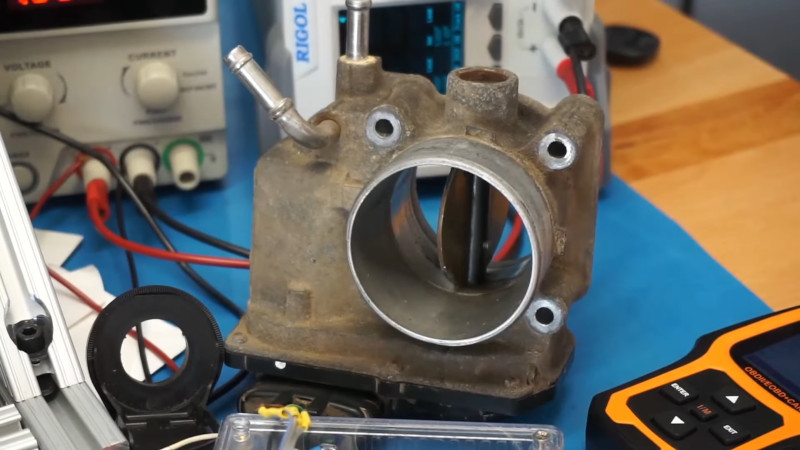
A few years ago, Toyota was in the news for a major safety issue with a number of their passenger vehicles. Seemingly at random, certain cars were accelerating without concern for driver input, causing many crashes and at least 37 confirmed deaths. They issued recalls both for the floor mats which were reported to have slid forward to jam the accelerator pedal, but this didn’t explain all of these crashes. There was another recall for stuck throttles, which [Colin O’Flynn] demonstrates a possible cause for on his test bench.
While most passenger vehicles older than about 15-20 years controlled the throttle with a cable connected directly from the throttle body to the accelerator pedal, most manufacturers have switched to a fly-by-wire system which takes sensor input from the accelerator pedal and sends that position information to the vehicle’s computer which in turn adjusts the throttle position. This might be slightly cheaper to manufacture, but introduces a much larger number of failure modes to a critical system.
[Colin] is recreating one of those failure modes by introducing an electromagnetic pulse at a specific point on the vehicle’s computer. In the real world, this could be caused by certain forms of EMF potentially including cosmic rays. This introduces a memory fault which the computer doesn’t seem capable of recognizing or clearing. With the right set of circumstances that [Colin] can reliably produce, the computer eventually will drive the throttle fully open, and the condition can only be corrected by power-cycling the vehicle’s computer.
Toyota is adamant that these problems have been successfully swept under the drivers-side floor mat, but according to IEEE and other professionals in related industries such as avionics, the passenger vehicle industry has done remarkably little to ensure enough redundancy in these systems to account for these types of failures. [Colin] does plan to test his setup in a real vehicle in the future to confirm that the vehicle will actually run under his lab scenario, so we should be seeing more information about this in the future. If you’re looking for a vehicle that is immune to all of the problems associated with computer control, take a look at this car which doesn’t even need a battery to drive, as long as you can give it a push start.
Recreating the “Stuck Throttle” Problem on a Toyota
Source: Manila Flash Report
0 Comments